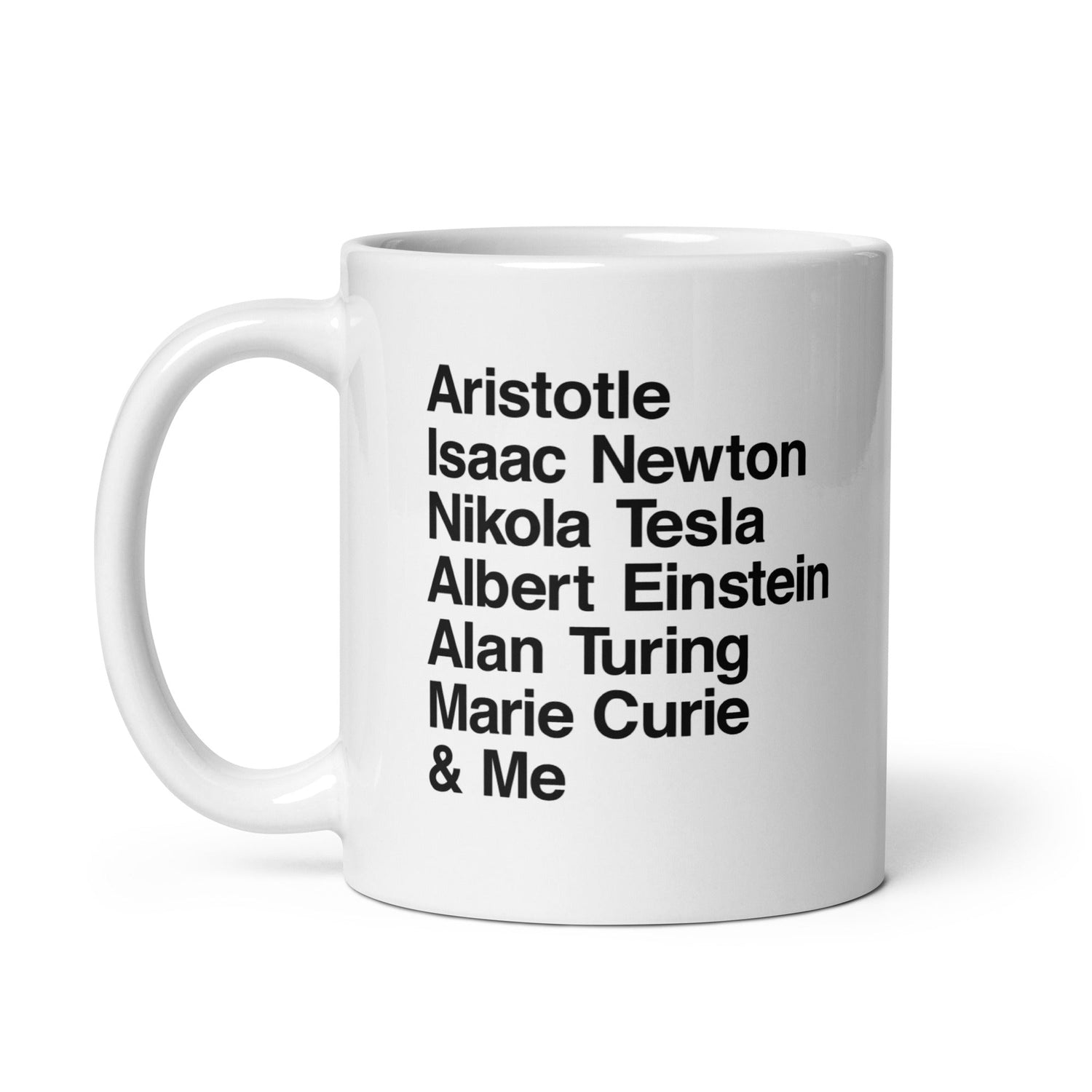
Left-Handed Nobel Prize Laureate
Share
Lefties Who Changed the World of Science
Left-handed scientists have long challenged the notion of what makes a genius. While only about 10% of the population favors their left hand, a surprising number of famous left-handed scientists have reshaped our understanding of the world. From groundbreaking discoveries in physics to unraveling the mysteries of DNA, scientists who are left handed have consistently defied expectations — fueling the question: are left-handed people smarter? Whether it's nature, nurture, or simply a different way of seeing the world, the legacy of left handed intelligence is hard to ignore.
Grab your favorite left-handed mug and read on as we explore some of the most famous left-handed scientists who claimed the ultimate recognition: the Nobel Prize.

James D. Watson
Cracking the code of life itself takes a mind wired to see patterns where others see chaos. One of the most pivotal discoveries of the 20th century, the double-helix structure of DNA, was made by a left-handed mind. James D. Watson (along with Francis Crick and Maurice Wilkins) earned the Nobel Prize in Physiology or Medicine in 1962 for unlocking the blueprint of life. The discovery revolutionized biology, opening the door to everything from genetic research to modern medicine. Whether mapping the molecules of life or challenging scientific dogma, left-handed scientists have a habit of rewriting the rules, one strand at a time.

Marie Curie
No list of left-handed scientists would be complete without Marie Curie. The first woman to win a Nobel Prize, and the only person to ever win in two different scientific fields, Curie's pioneering research on radioactivity changed science forever. Her work not only earned her the Nobel Prize in Physics (1903, shared with her husband Pierre Curie and Henri Becquerel) but also the Nobel Prize in Chemistry (1911) for her discovery of radium and polonium.

Pierre Curie
Marie’s husband and scientific partner, Pierre Curie, was also reportedly left-handed. A pioneer in crystallography, magnetism, and radioactivity, he helped uncover the principles that would define modern physics. His groundbreaking work on radioactive decay, alongside Marie, earned him a share of the 1903 Nobel Prize in Physics. Together, the Curies formed one of history’s most brilliant left-handed duos, proving that two left hands can change the world.

Irène Joliot-Curie
The legacy of left-handed scientific brilliance ran in the family. Irène Joliot-Curie, the daughter of Marie and Pierre, followed in her parents' footsteps to win the Nobel Prize in Chemistry in 1935. Along with her husband Frédéric Joliot-Curie, she discovered artificial radioactivity: a breakthrough that paved the way for nuclear medicine.

Albert Einstein
Though some debate whether Albert Einstein was truly left-handed or ambidextrous, many believe the scientific icon was a natural lefty who adapted to social pressure, a common fate for left-handers of his generation. Whether left-handed or ambidextrous, there's no denying that Einstein’s revolutionary theories reshaped our understanding of the universe. He won the Nobel Prize in Physics in 1921 for his work on the photoelectric effect, laying the foundation for quantum physics.
Left-Handed Brilliance Across the Science
So, how many left-handed scientists have changed history? The exact number may never be known, but one thing is certain: left-handed minds have a unique way of seeing the world. Whether unlocking the secrets of the atom, mapping our genetic code, or exploring outer space, lefties have left their mark on the frontiers of human knowledge.
Curious about more famous left-handed scientists and pioneers? Check out our articles on Left-Handed Astronauts, Historical Left-handed Leaders, or Famous Left-Handed Oscar Winners — and celebrate the brilliant southpaws who keep pushing the boundaries of possibility.


